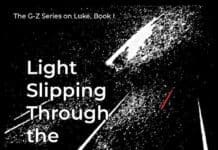By Michael Yoder, Retired FBI Criminal Profiler
Conducting a thorough crime scene analysis is a basic principle of death investigations. The analysis involves obtaining a contextual understanding of the crime, identifying evidence suitable for use in court, and developing a hypothesis about the events that occurred. Deliberate attempts to mislead investigators can undermine the integrity of an investigation. An experienced investigator must always consider that a crime scene is not what it appears to be.
It is not common, but there are two types of people who would alter a death scene. The first group often consists of people close to the victim. Their purpose is to safeguard the reputation and dignity of the victim after death. For example, family members who come upon a dead loved one displayed in an embarrassing or compromised position may alter the scene. An example of this is a suicide victim who, in a last act of emotion, decides to cross-dress or die nude. Many religions prohibit suicide, and for families, issues related to gender or sexual orientation can add further difficulty after such a loss. Before the police arrive, a family member may re-dress the victim or alter the crime scene to make it less controversial. They hope to protect the reputation of the victim and the victim’s family and restore the dignity of the survivors.
The second type to alter a crime scene to misdirect law enforcement efforts is the offender—usually someone close to the victim. Altering a crime scene may be seen as self-preservation since those close to the victim are often primary suspects. If the perpetrator can alter the crime scene to make it seem like a third party was the offender, they can avoid being punished for the murder. A husband who spontaneously kills his wife in their bedroom may want to make the crime appear to be a home robbery gone bad while he was conveniently at a different location. Or perhaps a better story involves a home intruder who sexually assaults and kills his wife while he was knocked unconscious—or he decides to move his wife’s body, so it appears that she voluntarily disappeared. He is hoping he can portray himself as a victim rather than a suspect.
Crime scenes may also become altered through the removal or addition of critical items. Removing instruments used as weapons in the murder or items (that triggered spontaneous rage in the offender) changes how the scene is viewed and can frustrate the progress of the investigation. Adding or removing suicide notes, ransom notes, or letters of goodbye by the victim alters the tone of the analysis. Deleting or altering social media comments, deleting browsing/search terms history, erasing communications which foreshadow displeasure of the offender with the victim may also be used to misdirect. Finally, cleaning up a crime scene prior to law enforcement showing up may delete vital information in the overall analysis.
Ultimately, altering a crime scene is a form of lying. If a crime scene has been altered, the key question is “Why?” What is the purpose of the lie? Who benefits from the lie?” Usually, when those answers are found, it will lead to what happened to the victim.
A good crime scene investigator looks with clinical thoroughness. Without getting emotional, they see the victim’s body to determine WHAT happened. They look for clues on the body and around the crime scene to determine WHY it happened. The move from analysis to investigation to determine WHO committed the crime. Crime scene analysis is important to the investigation. An altered or staged crime scene gives a false impression and perverts the reality of what occurred.
If you’re into true crime and want to learn sleuthing, join the Destin True Crime Club on Facebook. We meet monthly to research a real cold case and brainstorm next steps. It’s a serious yet fun group for those passionate about solving cases. For questions or speaking requests on violent crime topics, email myoder0361@gmail.com.





























































